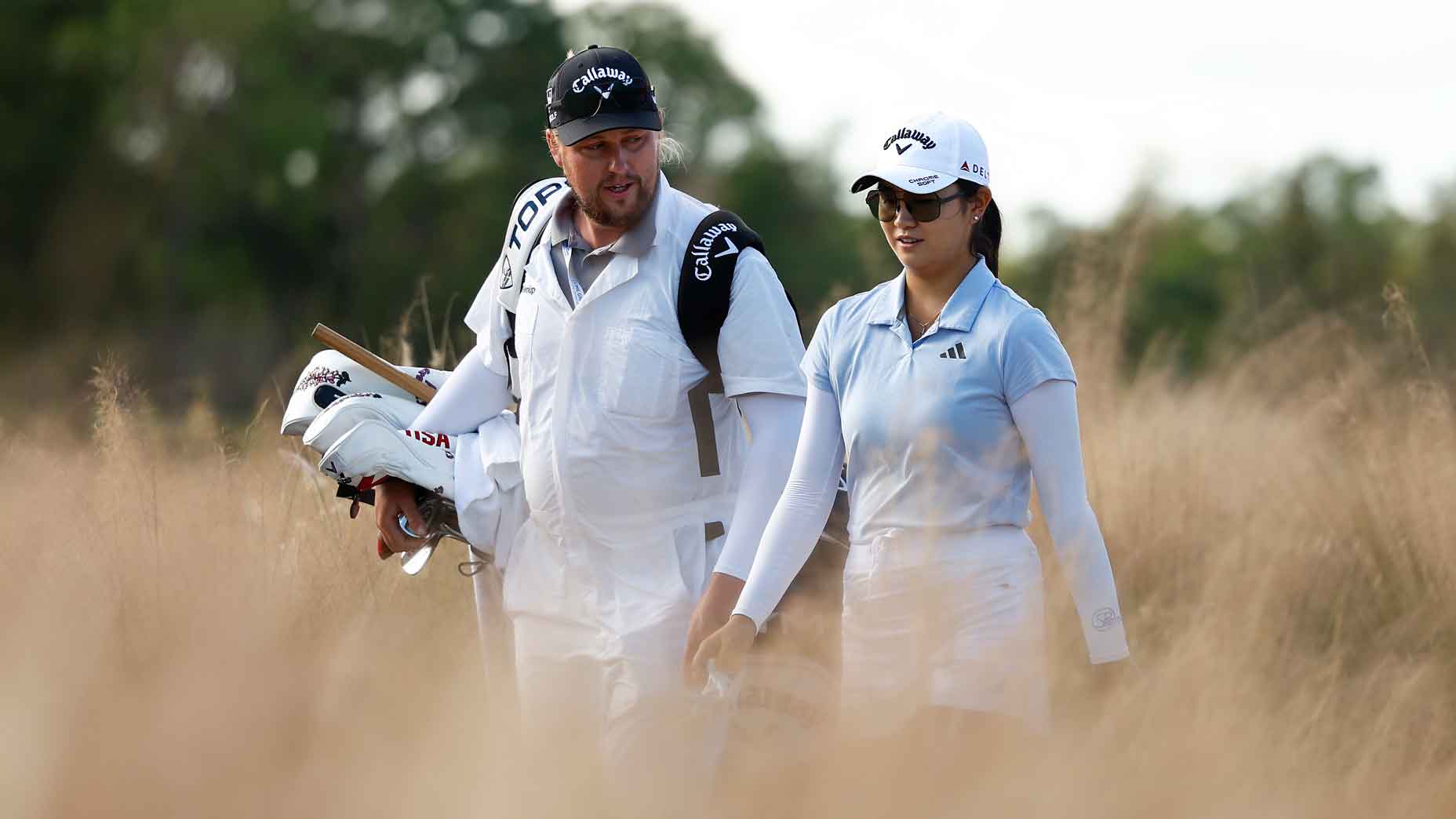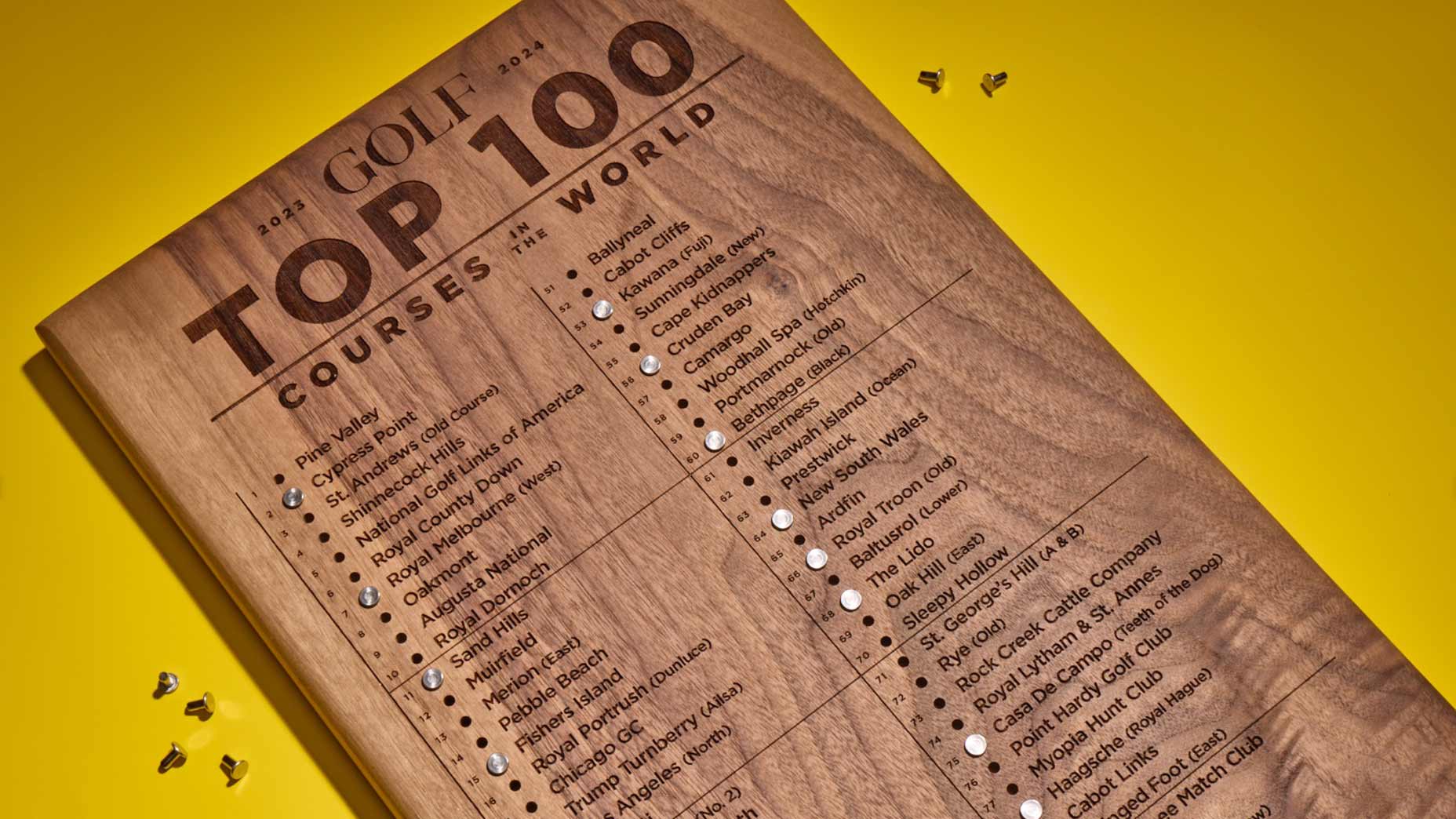10 things a pro caddie would tell you about YOUR game

Caddie Ted Scott and Scottie Scheffler at the 2024 Sentry.
Getty Images
It wasn’t long ago that people thought golfers weren’t athletes. Ditto the outdated notion that all caddies are slackers, smokers and scofflaws. Get real. The men and women in smocks today are more essential to the pro game than ever. Part stats nerd, part guru, part pack mule and therapist, a typical looper is both at the center of the action and a side player. What follows this week (and in the Jan./Feb. pages of GOLF Magazine) is a snapshot of the life — and loads of intel for your game.
ICYMI: 9 essential lessons every caddie learns, according to a pro caddie
***
THE KNOWLEDGE: What are caddies doing between wiping down a pro’s clubs and pulling out a yardage book? Learning the game about as well as anyone.
Coaches know the sweet science of the swing perhaps better than the pros themselves. Then there are the physios and the mental-game gurus, each with their own thoughts about how to rip it between the ropes. Caddies, by virtue of their 24-7 proximity to the best players in the world, are repositories of all of this know-how. They’ve shouldered their share of pro-am rounds, too, where they’ve witnessed the ups, downs and I-don’t-know-hows of golfers like… the rest of us. Here’s what they’d tell you if they were on your bag.
1. Be a Better Bunker Player
Amateurs tend to be terrible out of the sand. They set up with the clubface square because they want to dig the ball out. They don’t understand how to use the club’s bounce, which allows them to take a full swing. So they quit [swinging] as soon as they hit it. The solution: Get in a bunker with a bunch of balls and lay the clubface open before you grip the club, not the other way around, which is what most people do — grip first, then open the face. Then take full swings all the way through to the finish position so you can see that the ball is not going to go sailing on you. —Scott Tway, Brian Harman’s caddie
2. Know How Far Your Ball Flies
Out here on Tour, we only care about how far it flies. From there, we can judge how the ball will act on the ground. But ams, they’re usually not up on these numbers. If they’re hitting driver, it may finish at 280 yards, but it flew only 215. In my off time, I caddie at TPC Sawgrass, and with all of its cross bunkers it’s a good example of why it’s crucial to know your game better. To really learn, you need to spend more than just one day on a TrackMan or in a simulator, because the body changes every day. Tour pros work so hard to make sure their bodies are in the exact same place every single day. And they succeed! Ams can’t do that. But they can work on it. —Chevy Hartzog, Ben Crane’s caddie
3. Get Serious About Green Reading
Amateurs usually only study a putt from behind the ball, and that ignores so much information. It has to start with a view from the side to see if the putt is uphill or downhill. Speed is the number-one factor. High-handicappers are terrible at reading speed, and most don’t have a clue about how to read the grain. Whenever the grass of a green appears shiny, you’re putting down-grain. The ball will roll faster. When it’s more dull in color, you’re putting into the grain. It’ll roll slower. (This affects not only putts but chips. Down-grain chips will skip, and into-the-grain chips will grab. You’ll have to fly the ball farther because it’s going to check up way quicker.) Once you’ve assessed the grain and your speed, only then should you take a look behind the hole and finish by reading the break. —Micah Fugitt, Billy Horschel’s caddie
4. Think Positivity
Early on in my career, I was able to watch caddie legend Bruce Edwards interact with Tom Watson and Greg Norman, and Bruce was unbelievably positive. You could just see the confidence in him. If Watson missed a green, it was immediately, “Oh, we’re getting this up-and-down.” Anyone I’ve worked for has been negative at some point or another; no one is ever 100 percent positive. But delivering golf thoughts with positivity and confidence, handing someone a club or delivering a yardage with a small note of confidence — “You’re going to nail this shot” — goes a longer way than most people think. That works in all walks of life, including an amateur’s golf game. —Eric Larson, Harris English’s caddie
5. Put Away the Driver
Seriously! Just focus on hitting fairway wood about 200 yards and keeping the ball in play more often. During his first three years playing golf, my cousin, 13-year MLB pitcher Josh Garland, didn’t hit driver once. Zero drivers — period! Three-wood, five- wood — they’ve got more loft and are easier to control. It’s so much easier to play golf that way. Everyone wants to take super-long swings with the longest club in their bag, but shorter swings with a fairway wood are going to go plenty far. And, most importantly, they’ll be findable. —Brian Vranesh, K.H. Lee’s caddie
6. Learn the Aimpoint System
Use your feet to feel the slope of your putts and go from there. At this point, if you’re not using Aimpoint on the green, you’re falling behind. —Olly Brett, Rose Zhang’s caddie
7. Map Out Your Misses Ahead of Time
Whenever I analyze a course, it’s with Nick’s tendencies in mind. I put myself in his shoes, simulating where we’ll be playing from, remembering where we can miss and understanding where we can’t miss. We might not say it out loud, but we’re always aware of where a miss will put us. Amateurs don’t always think of where the miss will end up. And, sure enough, they find a hellish spot they could have avoided. Pro-am rounds teach us this all the time. Amateurs put themselves in positions where they’re bound to compound their mistakes. If a pro gets in a weird spot, they take their medicine, hit it back in play and don’t make two mistakes out of one. We’ve got this saying that is extremely true, for pros and for weekend golfers: Bogeys hurt ya, doubles kill ya. —Dave Markle, Nick Taylor’s caddie

8. Improve Your Pace of Play
Pace of play isn’t just how much time you take to swing the club when it’s your turn on the tee or in the fairway. Instead of scrolling TikTok, pick up the pace by caddying for your partner just like we would. While they size up their shot, shoot their number with a rangefinder. Fill their divot as they put their club away. Around the green, park your cart as close as possible to the next tee. Write your score down when you arrive at the tee, not while you’re standing on the previous green. And don’t wait to tell a story once you get to the tee. Tell it in transit! Pace of play is about picking up five to seven seconds everywhere. —Julien Trudeau, Mackenzie Highes’ caddie
9. Beat the Heat
But not by drinking alcohol! It can be tempting to have adult beverages when it’s hot on the course, but it won’t do much to keep you hydrated. Don’t want to pass out from the heat? Stick with a sports drink or water. —Rick Pano, Alexa Pano’s caddie (and father)
10. And Please… Club Up!
So many amateurs don’t know how far they hit it — or they’re always looking for that perfect shot. And that’s not going to happen all the time. So take an extra club, especially if there’s trouble in front of the green. I see so many shots wasted in front bunkers and penalty shots into water that fronts a green, because amateur golfers just don’t take enough club. Basically, know where the mess is — and adjust. —Jeff Johnson, Retief Goosen’s caddie











